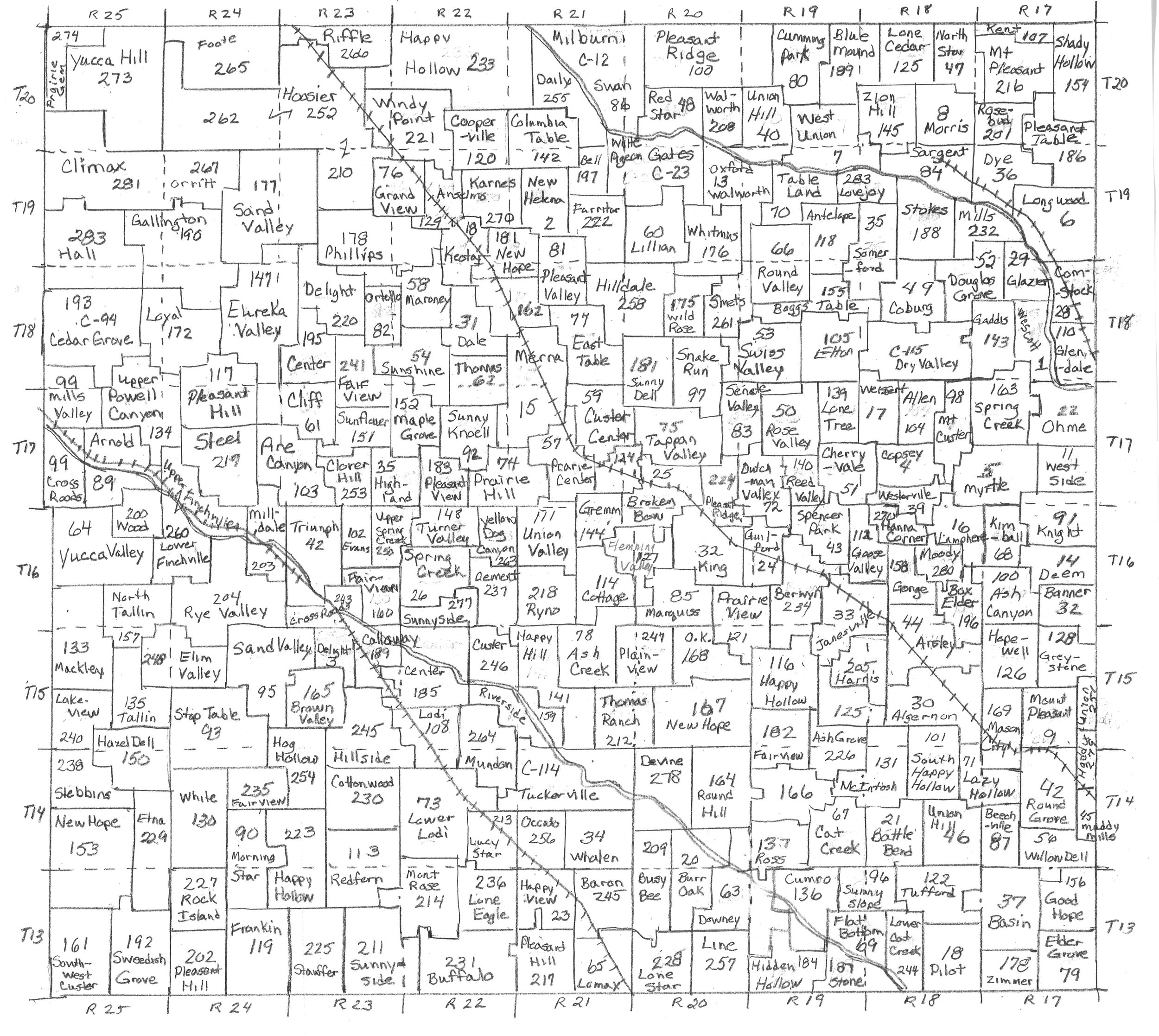
Academic Standing: Historical Society Searches for Schoolhouses
As it happens, there just may be a string of truth in the old scholastic yarn about walking to school uphill both ways. Before the dawn of the 20th century, Custer County’s 20-years-young- 2,592 square miles cradled over 21,000 people and an astounding 284 school districts, which minces nicely into about one per 76 residents.
The number, a still-standing record for school districts in a single Nebraska county, yields a quotient that seems to verify the old timers’ tale: it means that in 1890, there was a school roughly every 9 miles, with district lines nudged and squared based on the centers of a surprisingly fluid population. Custer County Historical Society curator Tammy Hendrickson explains.
“They were based every 6 miles so a child could walk.”
And some, Hendrickson says, pointing to a map charting the county’s 284 districts, are right under our noses.
“Merna has probably half a dozen or so, three or four here in Broken Bow are houses. I found my grandma’s schoolhouse; it used to sit out west and south of town on Ash Creek Canyon Road. The Cottage School, number 114. ”
11/21/2022
KCNI/KBBN
A map of Custer County’s 284 school districts circa 1900.
Many of the original schoolhouses were made of sod, that reliable Nebraska brick, but by 1900 most had been rebuilt of wood. Of course, as the mill of the clock ground out its dust, districts consolidated, and many of the old houses were hollowed out by whittling prairie winters.
Still more, however, were saved, thanks in no small part to the ingenuity of Custer County’s population and its pervasive dedication to its youth; Hendrickson says to keep pace with educational needs across its expanse, communities held true to the walking radius in a remarkably clever way.
“They would move the building because there wasn’t anything to ‘unhook’ necessarily, and slide it over to the next active group of kids in that same district. There might’ve been more kids on the north or south side of a district, so that little wooden house, on skids, would move according to the population need.”
Roughly half of the county’s one-room schoolhouses are still moving over a century later, and Hendrickson and the Custer County Historical Society, with community help, are actively pinning down their whereabouts. Some are now garages, some have become homes, and still others don’t quite know what they want to be when they grow up.
Hendrickson, over the past year and through puzzles of documents, has accounted for well over 100 schoolhouses.
“I started asking, ‘What happened to it?’ Then I find that the house got moved, and now it’s sitting by North Park School. Just east of there, and now it’s a garage.”
Of course, it is one thing to know that the schoolhouses move, but it’s another entirely to be able to identify them. Some have swapped masks so often they may be difficult to recognize, but Hendrickson says there are almost universal earmarks on the once-halls of learning: dead giveaways of defunct academies.
That schoolhouse’s original lot currently stands empty, with only a foundation’s footprint and a hitching rail, but Hendrickson’s familiarity with schoolhouse migration patterns helped track it down.
The telltale three-windowed building, early 1900s.
“They all have their character, but the biggest thing is they all had multiple windows on one side, continuous windows. Whereas a house from that time, you’d probably have four rooms, a window in each one, and that’s it.”
The project to document the new homes of the old houses has been ongoing for the better part of a year. Custer County turns 150 in May of 2027; Hendrickson says the historical society would be thrilled to know the current locations of the remaining schools by then to celebrate the century and a half of the county’s resilience and ever-present commitment to preserving its rich history.
For those with knowledge of, experience with, or just plain interest in the rural schoolhouses’ journeys, a survey about the rural school buildings, as well as resources including pictures and all manner of documentation, is available at the Custer County Museum in Broken Bow.


